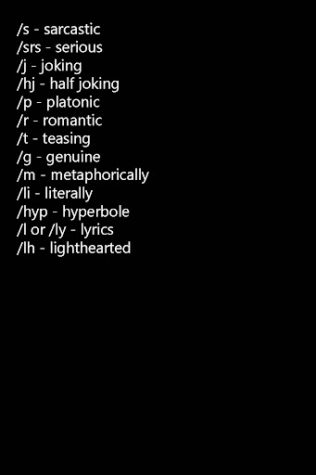A New Way to Communicate Emotion Has Emerged: Tone Indicators
Tone indicators are incredible, concise ways to do the impossible.
For many, the internet was the only way to communicate with other people during the beginning of the Coronavirus pandemic, when much of the world was in lockdown. Naturally, that led to a rise in social media use.
“Sure.”
That four-letter word is so versatile. Sometimes it’s a simple acknowledgement; sometimes it’s the end to an emotionally charged argument. When the conversation isn’t in person, it’s hard to tell which it might be. Enter tone indicators:
“Sure. /s”
If you’ve never seen a tone indicator before, you might think it’s simply a typo. But for those who know, those two characters mean the word was written sarcastically. Whoever typed this wanted the world to know that they were annoyed.
Anyone who communicates over the internet, from texters to tweeters, can use tone indicators to clarify whether a comment was sarcastic (/s), serious (/srs), teasing (/t), or genuine (/g). The possibilities are endless.
Every person who has ever texted has either sent or received a message that could have been interpreted several different ways. The consequent miscommunication can then be clarified or lead to one of several drastic consequences (the most common being a funny story to tell years later). But those misunderstandings can be frustrating in the moment — that’s where tone indicators come in.
The earliest conventional tone indicator was /s, and is thought to have originated on Reddit — although, given the decentralized nature of the platform, there’s no way to say definitively. But these tone indicators are only a contemporary twist on communicating emotion remotely, something that people have been trying to do for centuries.

Henry Denham invented the concept of the ‘irony mark’ in the late 16th century. He christened his punctuation mark the ‘percontation point’ and championed its use as at the end of rhetorical questions. The mark went obsolete eventually (I don’t often see backwards question marks; do you⸮), but dozens of punctuation marks have been proposed since then in order to signal a specific tone. It’s safe to say that none have caught on so far, but this contemporary set might stick: it relies on preexisting symbols (the backslash and one to three letters), it’s consistent (very few variations exist between lists), and it has emerged at a time when more people are communicating virtually than ever before.
During the course of the Coronavirus pandemic, social media use has increased at astounding rates. Generation Z and millennial social media viewership has increased by 61%. Each person had their own reason to turn to social media, but whatever the reason, it means that more people now depend on digital platforms to communicate than ever before. This has the potential to create an increase in miscommunication, which can have severe consequences.
One group that has advocated strongly for the use of these tone indicators has been the neurodivergent community. Types of neurodivergence include autism spectrum disorder, ADHD, and dyslexia.
For some neurodivergent people, especially those on the autism spectrum, it’s especially hard to discern tone in conversation, even more so in the murky world of virtual communication. As per their neurodivergent advocates, tone indicators are a fabulous way to make intention completely clear online. And how can normalizing clarity in communication not be a good thing?
Tone indicators may seem trivial, but they’re incredibly powerful for being so concise. /g
How can normalizing clarity in communication not be a good thing?
Felicia Jennings-Brown is a Copy Chief for ‘The Science Survey.’ What she appreciates the most about journalistic writing is its use as a channel to...

